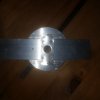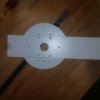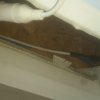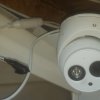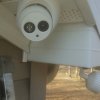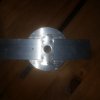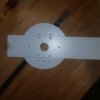Thought I'd get some ideas on what y'all are doing to drill a hole large enough for the waterproof RJ45 connector shells. Did you find that the waterproof shells are 3/4" in diameter and if so I'm assuming you are using a hole saw to cut the hole. I'm hoping a 3/4" hole saw takes out enough to barely squeeze the waterproof shell through the hole as I don't want to make the hole bigger than it has to be.
I'm actually drilling into aluminum soffit...not thrilled at the idea of sharp aluminum making contact with the camera cable so maybe I'll wrap some electrical tape around the wire in the area where it will make contact. Curious to know if y'all are installing rubber grommets into the aluminum hole. It's a shame that we have to make 3/4" holes because of the size of the waterproof shells but it is what it is.
I'm actually drilling into aluminum soffit...not thrilled at the idea of sharp aluminum making contact with the camera cable so maybe I'll wrap some electrical tape around the wire in the area where it will make contact. Curious to know if y'all are installing rubber grommets into the aluminum hole. It's a shame that we have to make 3/4" holes because of the size of the waterproof shells but it is what it is.





